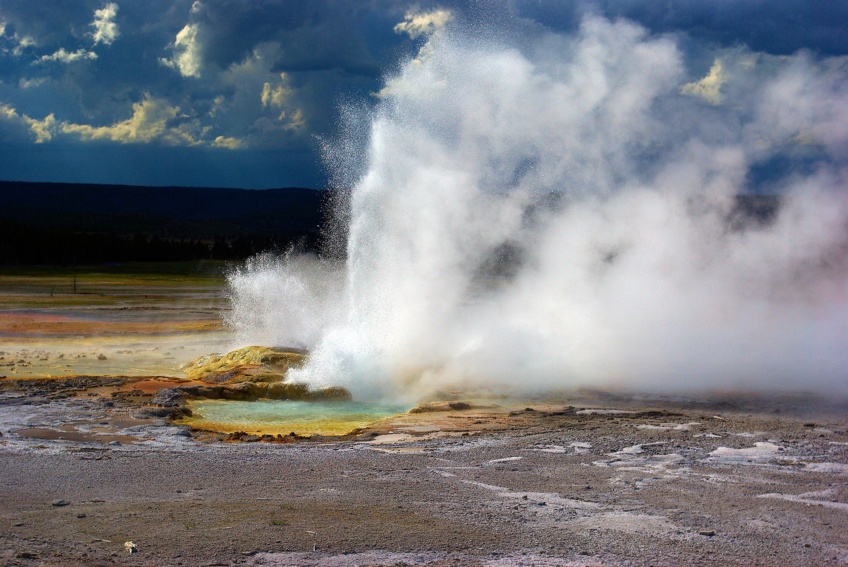
Most substances give up when temperatures drop toward absolute zero. Their beneficial traits diminish, their structures deteriorate, and engineers rush to find substitutes. However, strontium titanate, a crystal so common it has been utilized as an imitation diamond in costume jewelry, exhibits an surprising behavior: it improves.
Researchers at Stanford University have found that this “textbook” material, examined for years but never in a cryogenic setting, surpasses all other known materials when exposed to the extreme cold necessary for quantum computers and space technology. At 5 degrees Kelvin (which equates to negative 450 degrees Fahrenheit), strontium titanate’s capacity to control light through electric fields becomes approximately 40 times more potent than lithium niobate, the prevailing industry benchmark. It also enhances the output of barium titanate, the prior top cryogenic alternative, by threefold.
The results, published in Science, imply that engineers have neglected a star player concealed in plain view.
### Electric Fields Meet Light Waves
Strontium titanate (STO, as it is referred to by researchers) falls within a category of materials possessing “non-linear” optical characteristics. When an electric field is applied, STO curves, redirects, and reshapes light in ways most materials cannot. This electro-optic phenomenon enables engineers to create switches, modulators, and frequency converters for lasers and quantum systems.
But here’s the twist: while most materials falter in extreme cold, STO thrives.
> “Strontium titanate exhibits electro-optic effects that are 40 times more powerful than the most prevalent electro-optic material available today. Additionally, it operates at cryogenic temperatures, which is advantageous for constructing quantum transducers and switches that currently impede advancements in quantum technologies.”
That is Jelena Vuckovic, a professor of electrical engineering at Stanford and the study’s lead author. Her lab wasn’t seeking exotic substances or rare-earth materials. They aimed for something pragmatic.
Christopher Anderson, a co-first author and former postdoctoral researcher in Vuckovic’s lab (currently at the University of Illinois, Urbana-Champaign), noted that the decision became almost evident once they outlined the ideal components. STO met every requirement. During testing, the results aligned with their predictions, which is uncommon in experimental physics.
### A Material With Two Talents
STO doesn’t just excel at light manipulation. It is also piezoelectric, meaning it physically expands and contracts under applied voltage. This mechanical versatility, combined with its optical capabilities, poses a double advantage for cryogenic uses. Consider sensors for space telescopes, actuators in rocket fuel tanks, or mechanical switches in quantum circuits. All of these applications could gain from a material that remains functional in the cold emptiness of space or the icy components of a dilution refrigerator.
The research team pursued further. They replaced some of the oxygen atoms in the STO crystal lattice with denser isotopes, a meticulous adjustment that edged the material closer to a state known as quantum criticality. The outcome? Performance increased by yet another four times.
> “By appending just two neutrons to exactly 33 percent of the oxygen atoms in the material, the achievable tunability grew by a factor of four. We meticulously adjusted our composition to achieve optimal performance.”
That statement, likewise from Anderson, hints at the sophistication of the endeavor. This was not a haphazard materials search; it was calculated chemistry.
Giovanni Scuri, a postdoctoral researcher in Vuckovic’s lab and co-first author, stressed that STO is neither rare nor costly. It has been commercially produced for years as a substrate for growing other materials and as a diamond alternative in jewelry. Yet, despite being thoroughly covered in materials science literature, no one had rigorously tested it in cryogenic, electrically manipulated optical systems until now.
The ramifications extend across various industries. Quantum computers, which necessitate temperatures near absolute zero to sustain coherence in their qubits, could utilize STO-based switches to manage information transfer between processors and communications. Space agencies might implement STO sensors in satellites or deep-space probes, where temperatures commonly hover at cryogenic levels. Even ground-based applications, such as advanced laser systems and precision measurement instruments, could experience performance enhancements.
Vuckovic mentioned that the study received backing from Samsung and Google’s quantum computing division, both of which are actively seeking materials capable of meeting the requirements of next-generation devices. The ability to synthesize, modify, and process STO using standard semiconductor fabrication techniques enhances its appeal for widespread use.
The Stanford team is now transitioning from discovery to development, working on actual devices created from strontium titanate. Whether those devices will match the material’s exceptional laboratory performance remains uncertain. However, if they do, the unassuming crystal that once played a supporting role as a diamond substitute may finally receive its time in the limelight, even if that spotlight shines at negative 450 degrees.
[Science: 10.1126/science.adq6414](